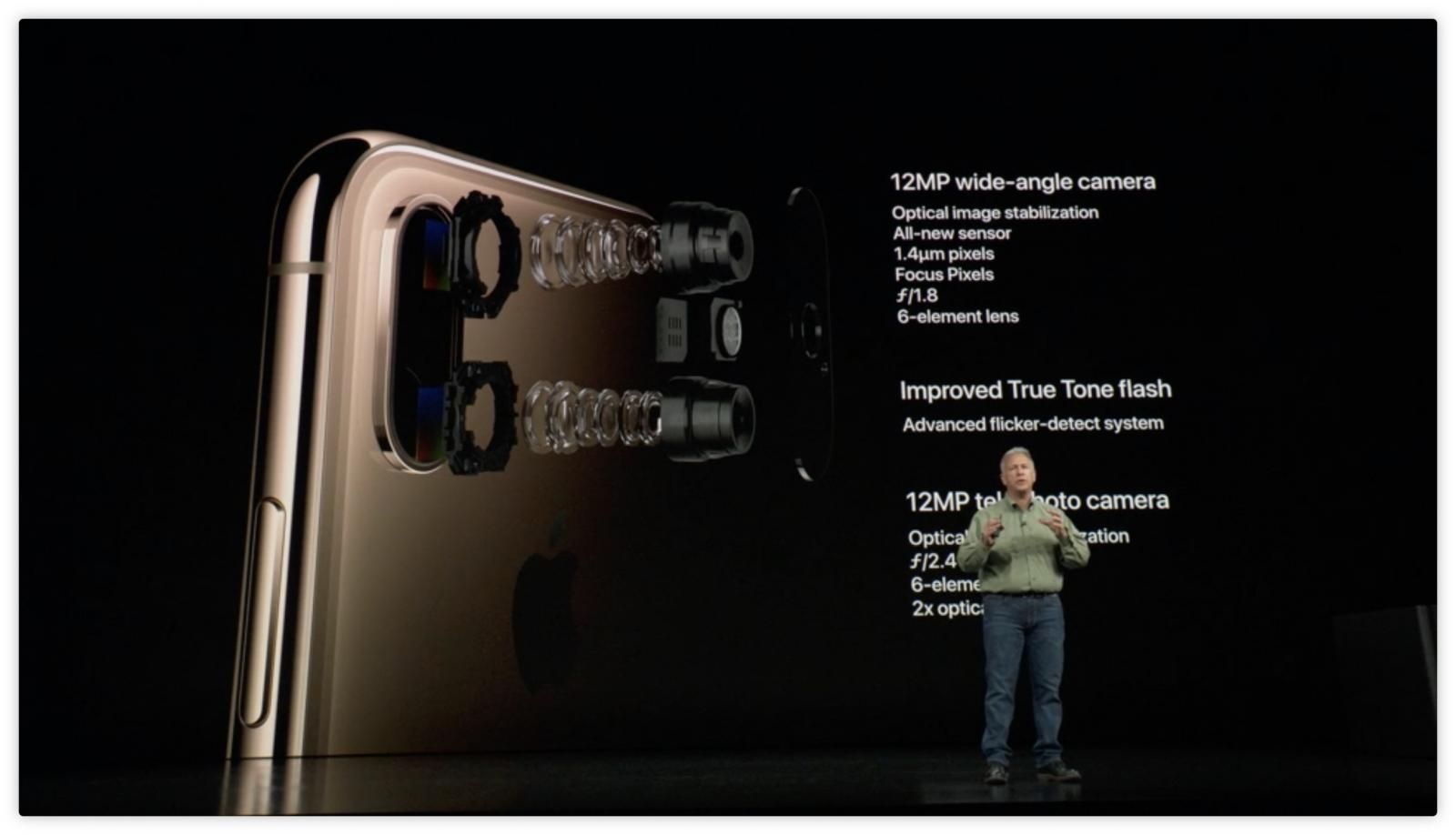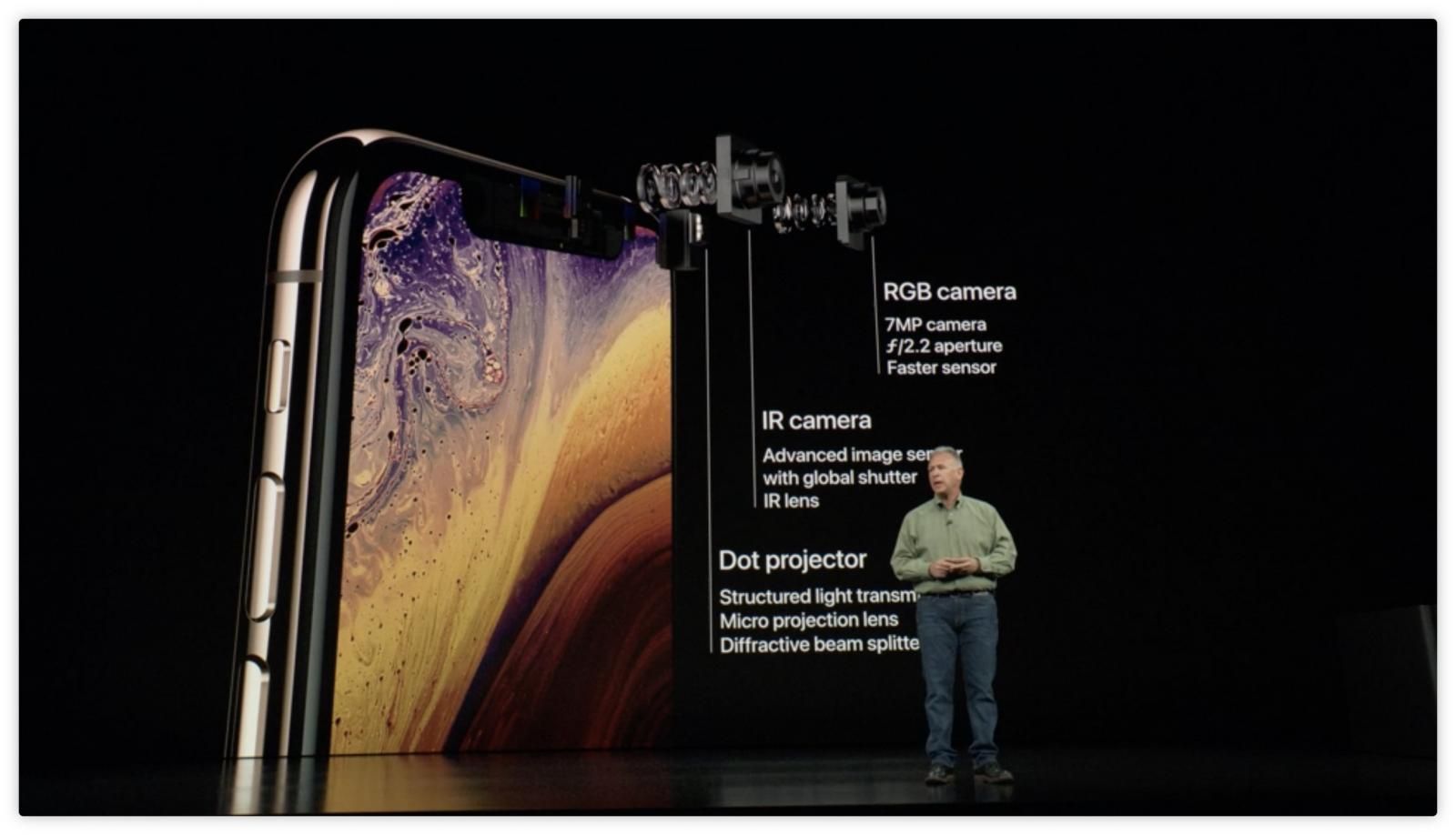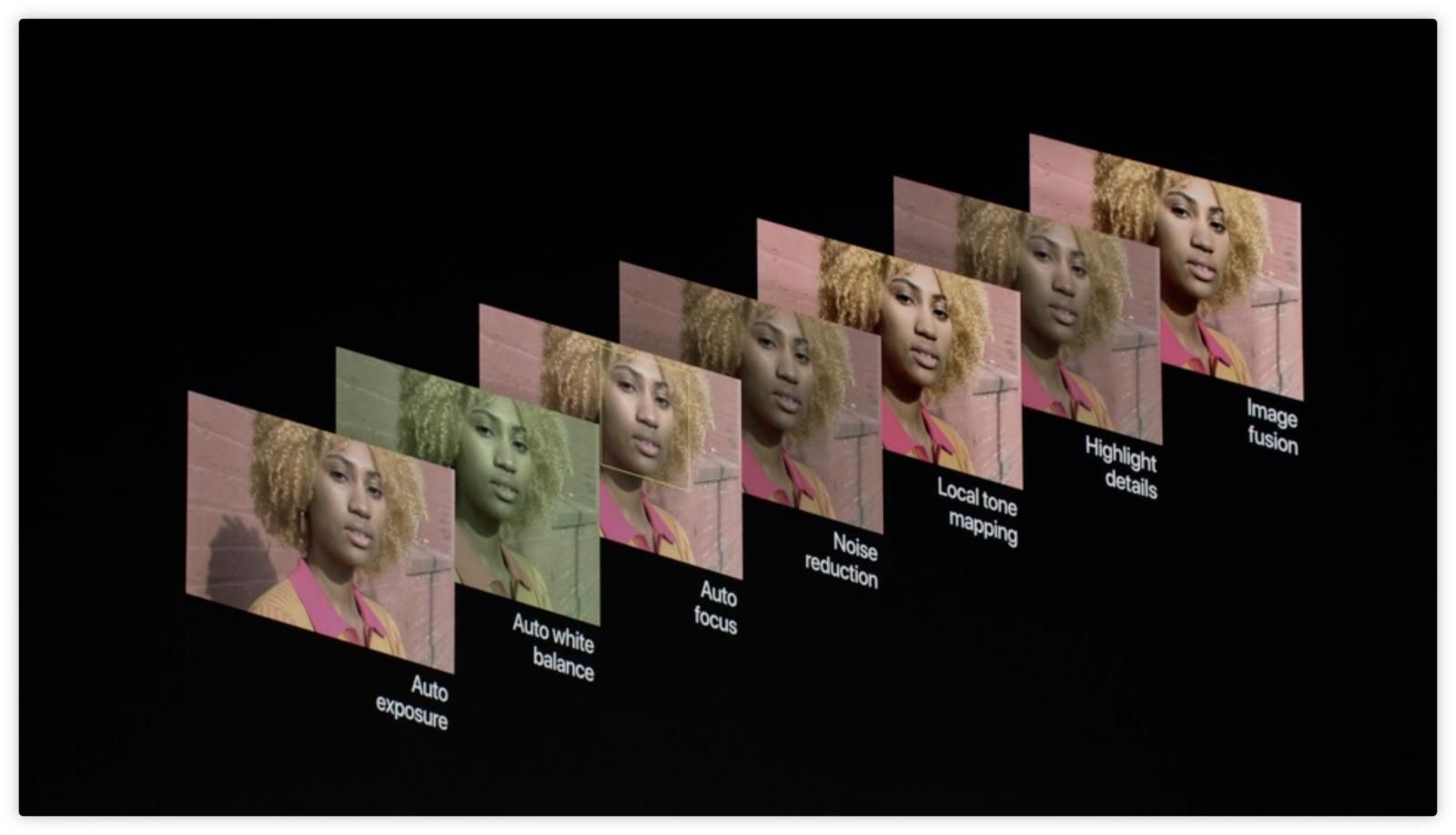The iPhone Xs and iPhone Xs Max share some pretty interesting cameras. And if you’re familiar with the iPhone X, all you need to know is that thing will be faster with these new phones.
The primary 12-megapixel unit is an all-new sensor and features an f/1.8 aperture with 1.4μm pixels. The telephoto lens is marked at twice the focal length of the primary unit and is also at 12 megapixels in resolution. Both sensors and optically stabilized and have six lens elements.
On the selfie side, there’s a 7-megapixel optical camera at f/2.2 aperture and it’s faster than previous devices. It’s tagged with an infrared camera paired with a structured light dot projector for augmented reality utilities involving users’ faces like Animoji or Memoji. All of this means high reliability rates for Face ID.
Smart HDR takes multiple frames from before and after a shutter press and composites regional data from various shots with different ranges of exposures and focus to produce a fused product with the best details in shadows and bright spots. HDR photos are compatible with a wider color gamut, though no standards have been mentioned
The Apple A12 Bionic helps process depth and color data at faster rates than previous silicon to allow for HDR video recording with stereo audio recording. And thanks to the new chip, new to iPhones is the ability to adjust the sensitivity of the bokeh generated through Portrait Mode software after the picture is taken.



